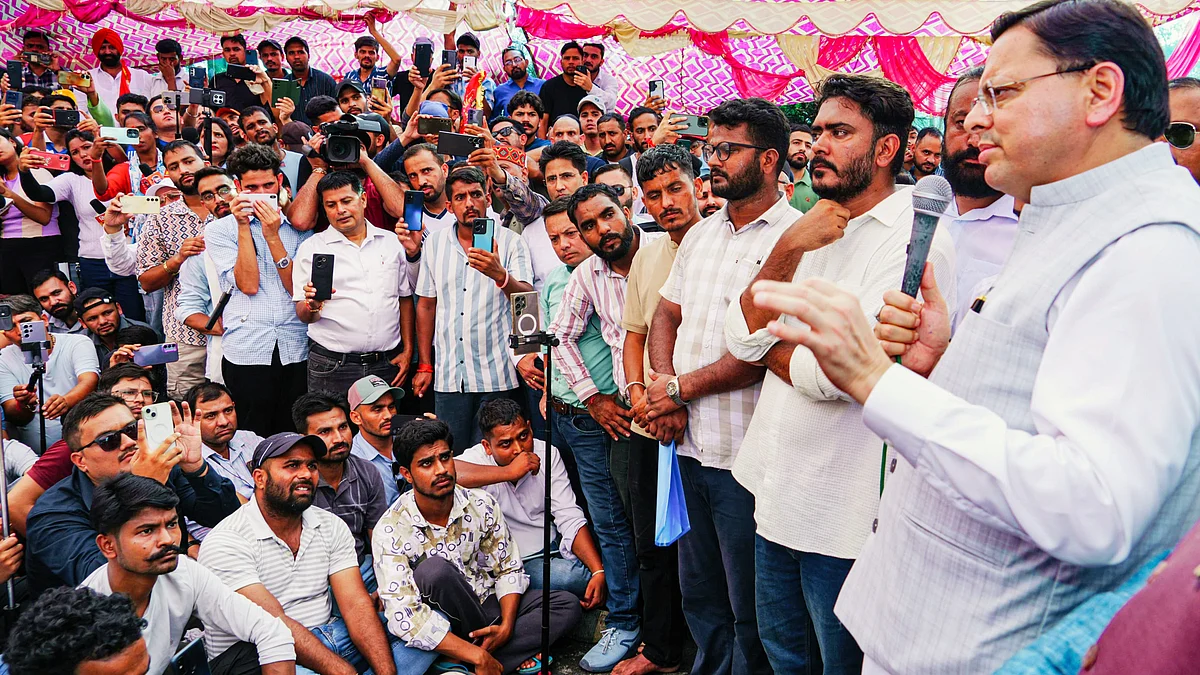Humanity shamed, crores spent: Uttarakhand’s contradictory realities
Amidst outrage over a woman giving birth on a hospital floor comes news of the Dhami govt's Rs 1,000-crore ad spend

A disturbing incident in Haridwar has triggered fresh outrage in Uttarakhand, highlighting the gap between the government’s soaring publicity spending and the lived realities of its citizens. Earlier this week, a pregnant woman was forced to give birth on the floor of a government hospital after she was denied admission by staff, as per media reports. The episode, captured in shaky mobile footage, showed the woman in pain while bystanders tried to shield her with cloth sheets.
For many, the visuals have become a metaphor for governance gone wrong. The opposition accused the ruling BJP of neglecting essential services while spending lavishly on its image. “Humanity has been shamed in Uttarakhand,” a local leader remarked, echoing public anger at the state’s healthcare system.
The criticism comes at a time when revelations about the state government’s advertising expenditure are under scrutiny. According to official records obtained by Newslaundry, the Pushkar Singh Dhami government has spent Rs 1,001 crore on advertisements over the past five years — an unprecedented figure for a state with a modest budget, small population, and pressing development challenges.
The spending trajectory has been sharp. In 2020–21, under the previous administration, ad spending stood at about Rs 77 crore. That jumped to Rs 227 crore in 2021–22, shortly after Dhami took office. In 2024–25 alone, the figure touched nearly Rs 290 crore, as per the Newslaundry report.
Much of this was directed towards television channels, which together received over Rs 400 crore in four years. National broadcasters such as News18 India, Aaj Tak, Times Now and NDTV were among the beneficiaries, with NDTV entering the list only after its acquisition by the Adani Group. Print media received about Rs 130 crore, digital outlets close to Rs 62 crore, and radio nearly Rs 31 crore.
The rise in spending was made possible by changes to eligibility rules in 2021. Earlier, only channels with extensive programming and stricter verification could qualify for government ads. The revised framework allowed almost any licensed channel with one year of operations to receive funds, with local verification replaced by simpler certification. Critics say this opened the floodgates for unchecked spending, weakening safeguards meant to prevent misuse.
At the same time, Uttarakhand has been witnessing sustained youth agitations, particularly in Dehradun and other urban centres. The protests over paper leaks and recruitments, often led by unemployed graduates and government job aspirants, show little sign of abating.
The youth are demanding fair recruitment processes, timely examinations, and an end to alleged leak scandals in state recruitment boards. Several competitive exams for posts in education, police, and administration were cancelled in recent years after paper leak controversies, deepening frustration among aspirants who spend years preparing.
Protesters say the state has failed to deliver secure employment opportunities, with contractual jobs replacing permanent posts. They point to the mismatch between the government’s headline advertising spends and its allocations for job creation schemes. “There is money for ads but none for our future,” Ramesh Rawat, a postgraduate protester who has been part of sit-ins outside the secretariat, has been quoted as saying in media reports.
While the government insists its ad campaigns are meant to spread awareness about welfare schemes and attract investment, critics argue that the sheer scale suggests a focus on image management rather than service delivery.
Legal observers also point to the 2015 Supreme Court judgment in Common Cause vs Union of India, which warned against the partisan misuse of public advertising funds. That ruling emphasised that government publicity should be cost-effective, purpose-driven, and non-partisan. Whether Uttarakhand’s expenditure meets that standard is now a matter of public debate.
With agency inputs
Follow us on: Facebook, Twitter, Google News, Instagram
Join our official telegram channel (@nationalherald) and stay updated with the latest headlines
